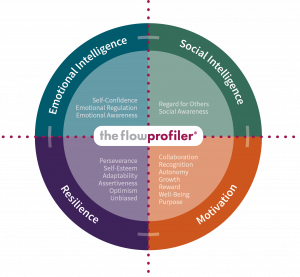
Adaptive leadership strategies are crucial for professional success. In today’s rapidly evolving business landscape, leaders face the daunting task of adapting to constant change. To thrive in such an environment, business leaders must embrace adaptive leadership strategies. These strategies empower leaders to navigate uncertainty, drive innovation, and inspire their teams to achieve success.
Here we will explore ten effective strategies for adaptive leadership, backed by research and expert insights.
-
Embrace a Growth Mindset:
A growth mindset, as described by psychologist Carol S. Dweck, is a belief that one’s abilities and intelligence can be developed through dedication and hard work. By fostering a growth mindset within themselves and their teams, leaders encourage continuous learning, resilience, and adaptability. This mindset cultivates a culture of innovation and improvement.
Source: Dweck, C. S. (2006). Mindset: The new psychology of success. Random House.
-
Foster Open Communication:
Open and transparent communication channels are crucial for adaptive leadership. Encourage a culture where employees feel safe to voice their opinions, concerns, and ideas. Regularly seek feedback from your team and actively listen to their perspectives. This approach enables leaders to gather diverse insights, promote collaboration, and make informed decisions.
Source: Hargie, O. (2016). Skilled interpersonal communication: Research, theory, and practice. Routledge.
-
Build Agile and Flexible Teams:

As markets rapidly change, adaptive leaders must assemble agile teams capable of responding to evolving demands. Foster a team structure that promotes cross-functional collaboration and flexibility. Encourage individuals to develop diverse skill sets and foster a culture of continuous improvement.
Source: DeCarlo, D. (2004). Extreme project management: Using leadership, principles, and tools to deliver value in the face of volatility. Jossey-Bass.
-
Encourage Innovation:
Innovation is the lifeblood of adaptive organisations. Encourage your team members to think creatively, challenge the status quo, and experiment with new ideas. Create an environment that rewards risk-taking, embraces failure as a learning opportunity, and fosters a culture of innovation.
Source: Brown, T. (2008). Design thinking. Harvard Business Review, 86(6), 84-92.
-
Develop Emotional Intelligence:

Emotional intelligence (EI) is the ability to recognise and understand emotions, both in oneself and others, and to use this awareness to guide behaviour and build effective relationships. Leaders with high EI can navigate complex interpersonal dynamics, foster collaboration, and inspire their teams.
Source: Goleman, D. (1998). What makes a leader? Harvard Business Review, 76(6), 93-102.
-
Embrace Continuous Learning:
Adaptive leaders understand the importance of continuous learning in a rapidly changing world. Encourage professional development initiatives, provide resources for skill enhancement, and lead by example. Emphasise the value of personal growth and instil a mindset of lifelong learning within your organisation.
Source: Day, D. V. (2000). Leadership development: A review in context. The Leadership Quarterly, 11(4), 581-613.
-
Promote Agile Decision-Making:
In times of uncertainty, adaptive leaders must make decisions quickly and effectively. Adopt an agile decision-making framework that emphasises rapid experimentation, data-driven insights, and the ability to pivot when necessary. Encourage decentralised decision-making to empower team members at all levels.
Source: Highsmith, J. (2002). Agile project management: Creating innovative products. Addison-Wesley Professional.
-
Develop Strategic Vision:

Adaptive leaders possess a clear and compelling strategic vision for the future. They are able to communicate this vision to their teams, aligning everyone’s efforts toward a common goal. Invest time in strategic planning, analyse market trends, and anticipate future challenges and opportunities. This vision provides guidance and direction, even in uncertain times.
Source: Collins, J., & Porras, J. I. (1996). Building your company’s vision. Harvard Business Review, 74(5), 65-77.
-
Cultivate Resilience:
Resilience is essential for adaptive leadership. In the face of adversity and setbacks, leaders must remain resilient and inspire their teams to do the same. Foster a culture that embraces change, encourages perseverance, and views challenges as opportunities for growth.
Source: Luthans, F., & Youssef, C. M. (2004). Human, social, and now positive psychological capital management: Investing in people for competitive advantage. Organizational Dynamics, 33(2), 143-160.
-
Foster Collaborative Networks:
Adaptive leaders recognise the power of collaboration and building strong networks. Establish relationships with external stakeholders, industry experts, and other leaders to stay informed about emerging trends and leverage collective wisdom. Foster a culture of collaboration within your organisation to encourage knowledge sharing and cross-pollination of ideas.
Source: Uzzi, B. (1997). Social structure and competition in interfirm networks: The paradox of embeddedness. Administrative Science Quarterly, 42(1), 35-67.
It is important to note that adaptive leadership is a dynamic and ongoing process. As a business leader, it is essential to continuously evaluate and refine your strategies to align with the evolving needs of your organisation and the market. Additionally, seek feedback from your team and encourage a culture of open communication to foster a collaborative environment that supports adaptive leadership.
By implementing these strategies, backed by research and expert insights, you can enhance your ability to navigate change, drive innovation, and inspire your team to achieve exceptional results. Remember, adaptive leadership is not just about reacting to change; it is about proactively shaping the future and creating a resilient organisation that can thrive in any situation.
References:
- Dweck, C. S. (2006). Mindset: The new psychology of success. Random House.
- Hargie, O. (2016). Skilled interpersonal communication: Research, theory, and practice. Routledge.
- DeCarlo, D. (2004). Extreme project management: Using leadership, principles, and tools to deliver value in the face of volatility. Jossey-Bass.
- Brown, T. (2008). Design thinking. Harvard Business Review, 86(6), 84-92.
- Goleman, D. (1998). What makes a leader? Harvard Business Review, 76(6), 93-102.
- Day, D. V. (2000). Leadership development: A review in context. The Leadership Quarterly, 11(4), 581-613.
- Highsmith, J. (2002). Agile project management: Creating innovative products. Addison-Wesley Professional.
- Collins, J., & Porras, J. I. (1996). Building your company’s vision. Harvard Business Review, 74(5), 65-77.
- Luthans, F., & Youssef, C. M. (2004). Human, social, and now positive psychological capital management: Investing in people for competitive advantage. Organizational Dynamics, 33(2), 143-160.
-
Uzzi, B. (1997). Social structure and competition in interfirm networks: The paradox of embeddedness. Administrative Science Quarterly, 42(1), 35-67.
 hello@flowprofiler.com
hello@flowprofiler.com




